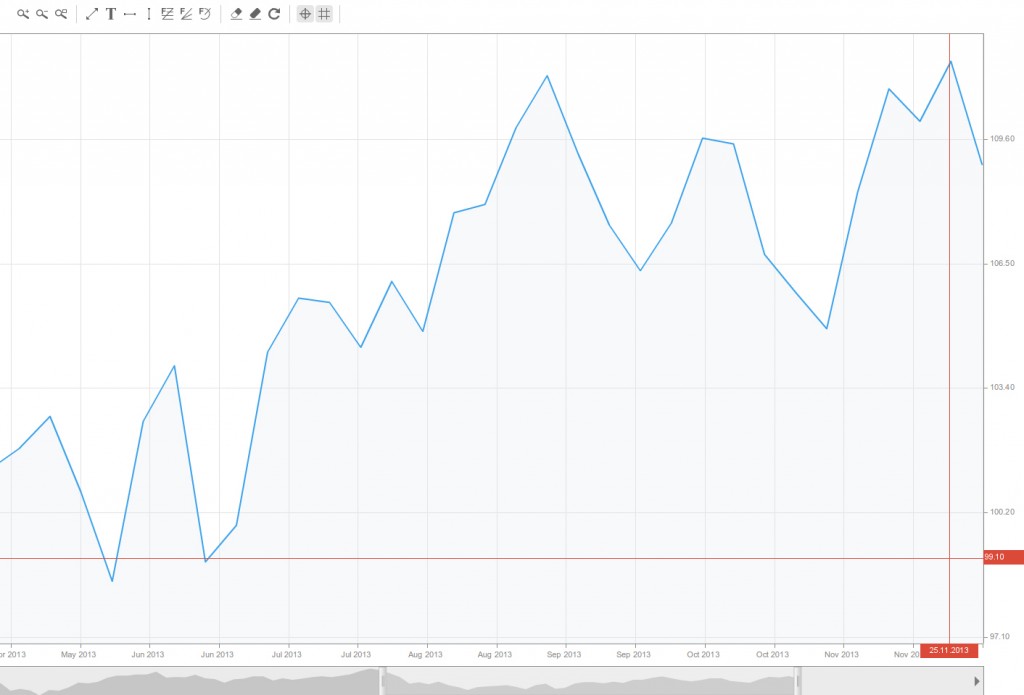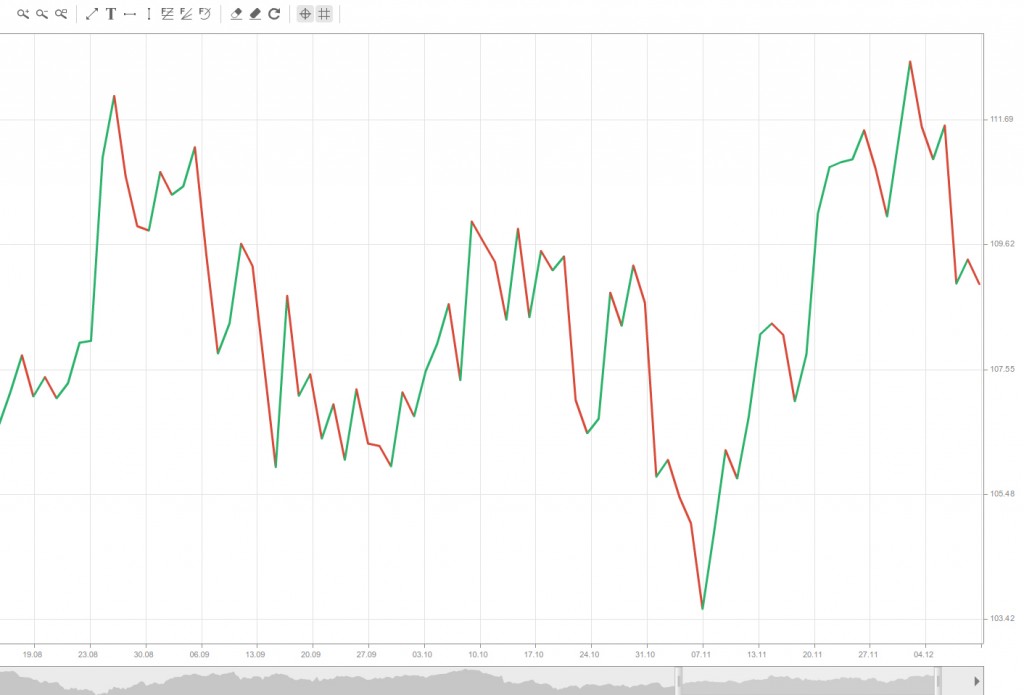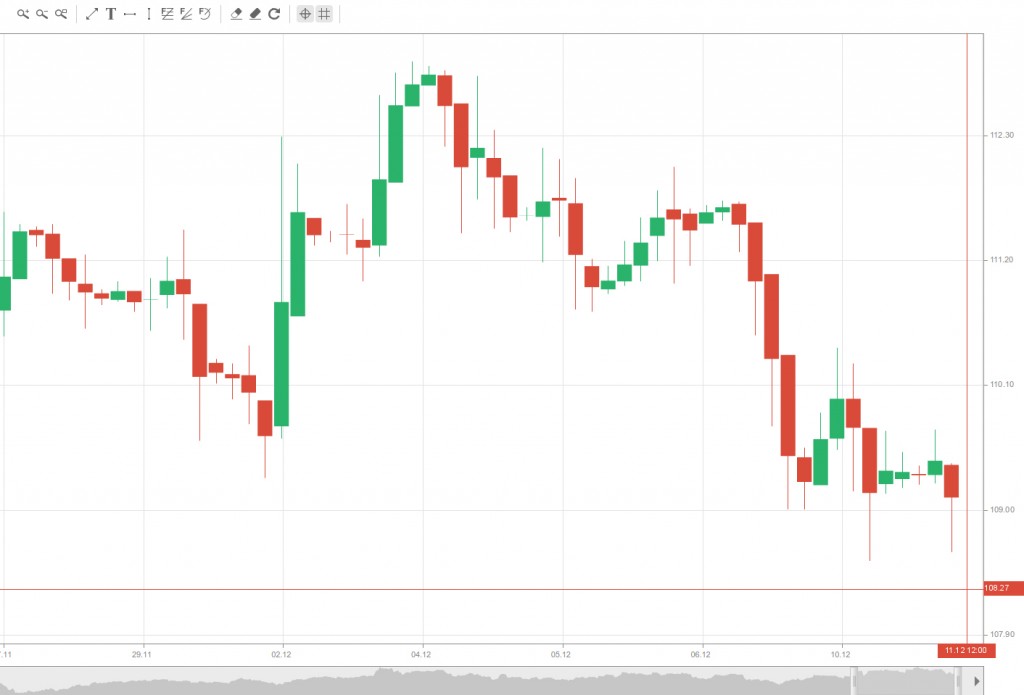What is a chart? Types of charts
This lesson will cover the following
- How price movement is visualized, charts
- Time frame of a chart
- Basic methods of visualizinandlestick is independent from others and has no relation with the previog price movement
In this topic you will learn what defines a chart, how its built and what are the different chart types specifics. You can see one visualized on the screenshot below.

A trading chart is a sequence of prices drawn over a certain time frame. On the chart, the vertical axis (the y-axis) signifies the price scale and the horizontal axis (the x-axis) represents the time scale. Prices are illustrated from left to right across the horizontal axis with the most recent price movement being the furthest right.
Technical analysts (who trade exclusively on charts) use charts to analyze various types of securities and forecast future price movements.
Although technicians use graphs almost exclusively, the use of charts is not limited to just technical analysis. They can also be of great use to fundamental analysts (who trade using fundamental data) due to their easy-to-read graphical representation of a security’s price movement over a specific period of time. A graphical historical record helps spot the effect of key economic and non-economic events on a security’s price, allows you to assess its performance over a certain period of time and whether it’s trading near extremes (highs and lows), or in between.
Time frame of a chart
The time frame used for plotting a chart depends on how much we want the visualized data to be compressed. You can have intraday (ticks, 1-minute, 5-minute, 10-minute, 1-hour, 4-hour time frame etc.), daily, weekly, monthly, or annually time frames. If you want more detail to be displayed, you will need the less compressed data. However, the greater compression of the data, the more data can be displayed on the chart (you cant see two-year old data on a five-minute time frame).
Daily data comprises intraday data that has been wrapped up to show each day as a single period.

Weekly data consists of daily data that has been squeezed to show each five-day period as a single data point.

The more the data is compressed, the longer the time frame possible for displaying the data. Traders focus on charts made up of daily and intraday data (such as 10 minute graphs) to predict short-term price fluctuations, because as weve already mentioned, the less compressed the data is, the more detail it will plot. However, while rich on detail, short-term also contain a lot of random noise and can be volatile. Large price spikes, price gaps and wide high-low ranges and can distort the overall picture much easier.
Investors concentrate on weekly and monthly charts to see long-term trends and predict long-term price movements. Most experienced market players however use a combination of both short-term charts and long-term charts. Bigger time-frames are used for analyzing the general picture and to get a broad perspective of the price action. Once the large picture is analyzed, a daily or an even smaller time frame can be used to zoom in on the last few months, days and hours.
There are 4 methods which are the most used when visualizing price movement – Line, Bar, Candlestick, Heikin-Ashi. Each of them has its own advantages and blind spots.
Line chart

Line charts include one piece of trading information, which is usually the close (the last price traded during the time frame). Some market players who trade on a daily and not on intradaily basis consider the closing price to be outweighing the open, high or low, because intraday swings can be ignored, if one takes into account only the close. Moreover, sometimes there are only closing data available for some indices and thinly traded stocks, rendering line charts the only available option.
Bar chart

One the most popular charting methods is the bar chart. In order for each period of the bar chart to be plotted, you will need the high, the low, and the close. The open price is not mandatory, but is used when available. The high and low are visualized by the top and bottom of the bar. The open price is displayed as a short horizontal line extending to the left of the bar, while the close is the short horizontal line extending to the right. On a daily chart, each bar represents the high, low, open and close for the particular day. Weekly charts would have a bar for each week based on Mondays open, Friday’s close and the high and low for that week.
Some bar charts however do not include the open price, which means that the bar is crossed only by the close price. This variation depends on the data available.
Bar charts are more suitable for displaying a large amount of data than candlesticks. The bar charts individual bars are relatively thin, enabling users to fit more bars before the chart gets cluttered. Line charts show less clutter as well, but also offer less detail (no high-low range). Bar charts which lack open price are an ideal method for analyzing the close relative to the high and low.
Candlesticks Chart

Originating in Japan, candlestick charts have recently become very popular. For a candlestick chart to be plotted, you will need all the open, close high and low of the price together, whereas for the bar chart you can have the open missing. A weekly candlestick is based on Monday’s open, the intra-week high-low range and Friday’s close, while a daily candlestick uses the same price levels, but on a daily basis.
Many investors use candlestick charts because they make the relationship between the open and the close very easy to read. Green candlesticks indicate upward price movement (when the close is higher than the open), while red candlesticks are plotted when the close is below the open. The distance between the open and the close, illustrated as a vertical red or green rectangle, is called the body of the candle. The lines reaching above and below the body are known as shadows and represent the high and low for the respective period.
Heikin-Ashi

Those familiar with the candlestick charts know that it is one of the best and fastest ways to understand the condition of the market.
Japanese traders tried to make price prediction easier and faster. Heikin-Ashi chart, that came after the candlestick chart, is one of the several different achievements of Japanese traders. You can predict faster using the Heikin-Ashi charts. Furthermore, they are easier than candlestick charts to understand and trade.
Heikin-Ashi chart looks like the candlestick chart, but the method of calculation and plotting of the candles on the Heikin-Ashi chart is different from the candlestick chart.
In candlestick charts, each candlestick shows four different prices: Open, Close, High and Low price. Every single candlestick is independent from others and has no relation with the previous or next candlestick.
How is Heikin-Ashi formed?
On the opposite, Heikin-Ashi candles are calculated and plotted using some information from the previous candle:
Open price: the open price in a Heikin-Ashi candle is the average of the open and close of the previous candle.
Close price: the close price in a Heikin-Ashi candle is the average of open, close, high and low prices.
High price: the high price in a Heikin-Ashi candle is chosen from one of the high, open and close price, which has the highest value.
Low price: the low price in a Heikin-Ashi candle is chosen from one of the high, open and close price, which has the lowest value.
Heikin-Ashi chart is slower than a candlestick chart and its signals are delayed due to the relation of candles between each other. This delay has made the Heikin-Ashi candle a good indicator for volatile currency pairs because it prevents us from rushing and making mistakes and trading against the market.
Because of the delay the Heikin-Ashi chart has less number of false signals and prevent us from making false decisions. On the other hand, Heikin-Ashi candles are easier to read because unlike the candlesticks they don’t have too many different patterns.
Some traders rely solely on Heikin-Ashi to trade. It is a good idea especially for those who are not patient and disciplined enough or those who lose because of entering too early and exiting too late. It helps you follow the trending markets, because it keeps you wait for a longer time, and then it lets you in when you are at the beginning of a strong trend.